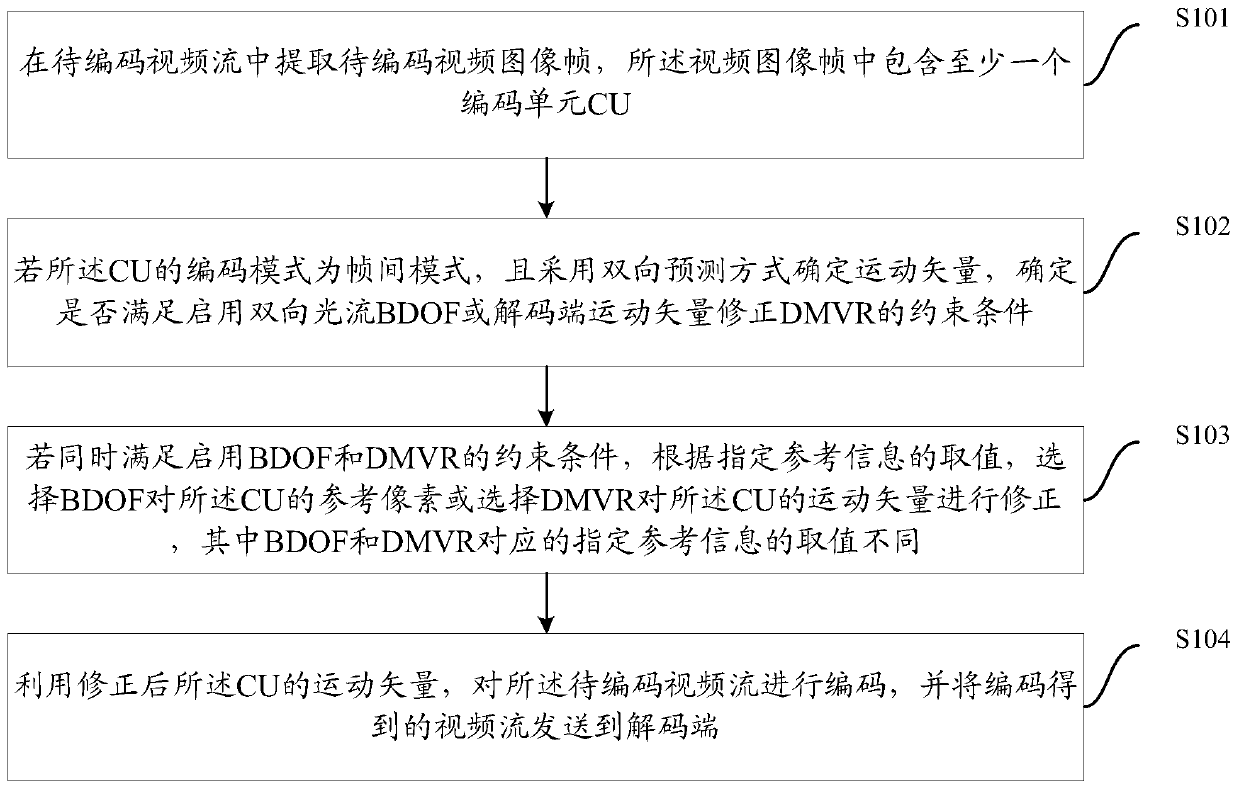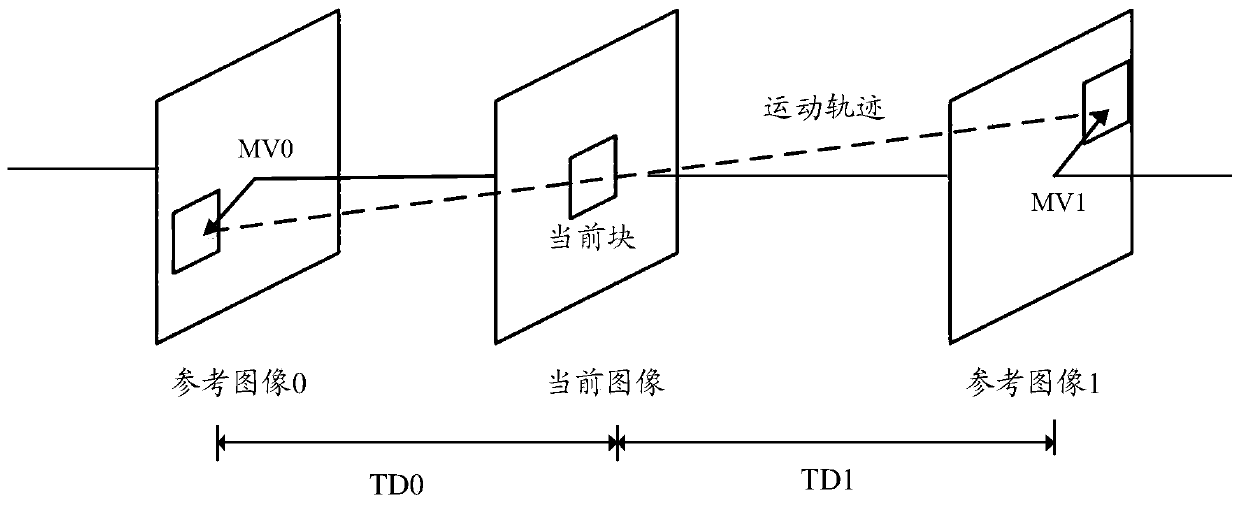Video coding and decoding method and device
A technology for video decoding and video streaming, which is applied in the field of video coding and can solve problems such as low processing efficiency and delay.
- Summary
- Abstract
- Description
- Claims
- Application Information
AI Technical Summary
Problems solved by technology
Method used
Image
Examples
Embodiment 1
[0213] An embodiment of the present invention provides a video encoding method, which is applied to the encoding end, such as figure 1 shown, including:
[0214] Step S101, extracting a video image frame to be encoded from a video stream to be encoded, and the video image frame includes at least one coding unit CU;
[0215] A video stream to be encoded is acquired, and a video image frame to be encoded is extracted from the acquired video stream to be encoded, and the video image frame includes at least one coding unit CU. The image division structure divides the input current video image frame into blocks called coding tree units CTU, and uses a quadtree with a nested multi-type tree structure to divide a coding tree unit CTU into coding units CU, which have Leaf CUs defining regions that share the same prediction mode, which may be intra or inter, etc. Each CU contains one or more PUs and TU trees. In VVC, each CU is always used as a basic unit for prediction and transfor...
Embodiment 2
[0282] In the method provided in Embodiment 1 above, when selecting BDOF to correct the reference pixels of the CU or selecting DMVR to correct the motion vector of the CU, the encoding end and the decoding end adopt the following methods.
[0283] When it is determined that the constraint conditions of enabling bidirectional optical flow BDOF and enabling decoder motion vector correction DMVR are met at the same time, and according to the value of the specified reference information, select BDOF to correct the reference pixels of the CU or select DMVR to correct the motion vector of the CU , either of the following methods can be used:
[0284] Way 1: Select BDOF to correct the reference pixels of the CU or select DMVR to modify the motion vector of the CU according to the value of the specified coding information.
[0285] As an optional implementation manner, according to the value of the specified coding mode information, select BDOF to correct the reference pixels of the ...
Embodiment approach
[0287] 1) If the coding mode indication information indicates to select the conventional merging mode, select DMVR to correct the motion vector of the CU; otherwise, select BDOF to correct the reference pixels of the CU.
[0288] When performing bidirectional motion vector prediction on the current CU, enable DMVR to correct the motion vector of the current CU only when the conventional merge mode is selected for the current CU. In this case, do not enable BDOF to perform motion correction on the CU; When the current CU does not select the conventional merge mode, BDOF is enabled to perform motion vector correction on the reference pixels of the CU, and DMVR is not enabled.
[0289] The above method determines whether to enable DMVR or BDOF to perform motion correction on the CU according to whether the conventional merge mode is selected for the current CU. The codec mode selected for the current CU is the reference information that can be directly determined, so it can be dir...
PUM
 Login to View More
Login to View More Abstract
Description
Claims
Application Information
 Login to View More
Login to View More - R&D
- Intellectual Property
- Life Sciences
- Materials
- Tech Scout
- Unparalleled Data Quality
- Higher Quality Content
- 60% Fewer Hallucinations
Browse by: Latest US Patents, China's latest patents, Technical Efficacy Thesaurus, Application Domain, Technology Topic, Popular Technical Reports.
© 2025 PatSnap. All rights reserved.Legal|Privacy policy|Modern Slavery Act Transparency Statement|Sitemap|About US| Contact US: help@patsnap.com



